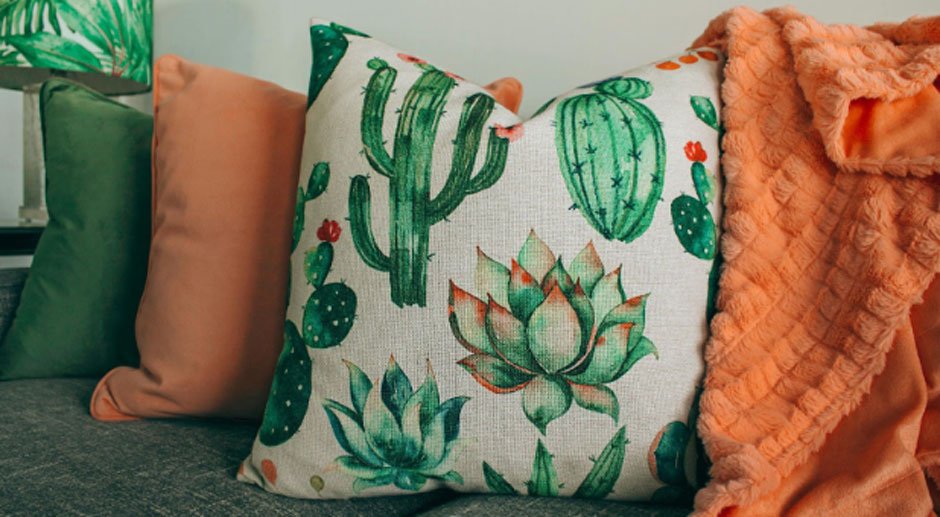Cushion Care Tips: How to Keep Them Fluffy and Fresh Longer

Introduction
Cushions are comfort and design’s hidden heroes. They relax us and warm the room. From soft couches to cosy reading nooks, cushions are essential to our lifestyles. However, regular usage, dust, and natural wear can dull them. Flattened fillings, musty odours, and fading coverings indicate cushion issues.
Maintaining its fluff and freshness requires consistency and the appropriate practices, not expert assistance. Cushions may stay plump, clean, and welcoming for years with proper cleaning, fluffing, and protection.
Regular Fluffing: The Secret to Lasting Plumpness
Fluffing is the core of cushion upkeep, despite its simplicity. Daily cushion usage compresses the filling, losing air and compacting it. Regular fluffing distributes filling evenly and prevents flat areas by reintroducing air into the cushion.
Holding the cushion at opposing ends and shaking it hard works. To loosen compacted regions, gently knead and massage the sides. At a cushion outlet, we always suggest giving your feather or down cushions a quick refresh by drying them on low heat or air-only with two clean tennis balls — it’s a simple trick to restore their loft and softness. Fluffing your cushions daily for a few minutes helps keep them full, smooth, and inviting.
Caring for the Cushion Filling
The filling makes a cushion comfy and supportive, yet it’s the most disregarded part of maintenance. For optimal care, follow type-specific steps:
Feather and Down Fillings
Luxury feather-filled cushions need upkeep to preserve their loft. Shake and air them outside monthly to avoid odours. A moderate no-heat dryer tumble can restore volume. Use covers to preserve feather cushions from perspiration and dust instead of cleaning them often.
Synthetic Fillings
Synthetic fibre or polyester cushions are stronger and more forgiving. Machines wash them on easy cycles, but dry them thoroughly to avoid odours. Artificial fibres can clump over time, so fluffing or a gentle tumble dry will keep them supple.
Foam Fillings
Although thick and sturdy, foam cushions are moisture-sensitive. Avoid immersing them in water; spot-clean with mild soap and little moisture. Sprinkle baking soda over foam, allow it for a few hours and hoover to remove odours.
Odor Control and Freshness Maintenance
In households with excessive humidity, even well-maintained cushions can acquire odours from everyday usage. Simple deodorising routines can keep things fresh. Baking soda works wonders—spread it evenly, wait 20–30 minutes, and hoover.
In a spray bottle, combine equal parts water and white vinegar with a few drops of lavender or eucalyptus essential oil for a nice scent. Let cushions air-dry after lightly misting. Vinegar neutralises odours and essential oil gives a pleasant aroma. Avoid overwetting to prevent filling moisture retention. Clean, dry, and ventilated cushions maintain freshness without disguising odours.
Rotating and Rearranging for Even Wear
Cushions benefit from rotation like mattresses. Pressure on the same locations creates uneven flattening and fading. Rotating and switching cushions between couch seats or sides helps fillings recover and coverings wear evenly.
Try switching cushions every two weeks. To maintain equal light and use, move ornamental cushions occasionally. Many high-quality cushions include double-sided coverings so you can switch it if one side wears out. Small changes help them keep their form, balance, and appearance longer.
Deep Cleaning: Seasonal Maintenance for Cushions
Cushions need more than fluffing and spot cleaning every few months. Remove the covers and wash or dry clean them per the care label. If washable, gently clean the inserts after vacuuming to eliminate dust and dirt.
Reassemble after thorough drying. Cushion mould may form from even mild wetness. Ideally, sun-dry the inserts to destroy germs and refresh them. A deep seasonal clean revives your cushions’ beauty, cleanliness, and comfort, making your area seem fresh again.
Restoring Flat Cushions
If your cushions seem worn and deflated, they may still be functional. A few basic methods can revive them. Fluff them and massage the filler to release compacted regions. If it doesn’t work, add polyester fiberfill, foam inserts, or feather refills to sagging cushions.
Replacement of foam cushions that have lost firmness is an affordable approach to make them feel fresh. No-heat tumble drying using dryer balls can help add volume to cushions. Refreshing your favourite cushions prevents early replacement and keeps them plush.
Storage Tips for Unused Cushions
Proper storage is essential whether you swap décor periodically or keep cushions. They should be cleaned and dried before keeping since moisture is the largest danger to freshness. Avoid mildew by using cotton or linen storage bags instead of plastic.
Keep them cold, dry, and out of direct sunlight and temperature swings. Stacking hefty things on top can permanently flatten cushions. When ready to use again, air and fluff them to restore softness and form. Stowing your cushions properly keeps them pleasant and lovely.
Conclusion
Cushions provide vitality, comfort, and charm to our rooms, but they need care. Regular fluffing, careful cleaning, and preservation may extend their life and keep them welcoming. Understanding your cushion’s materials, preserving them from the outdoors, and deep cleaning them regularly keeps them fresh, plump, and lovely.
Cushions are more than accessories. They reflect a well-kept house where every detail contributes to comfort, cleanliness, and timeless design.
Last modified:

